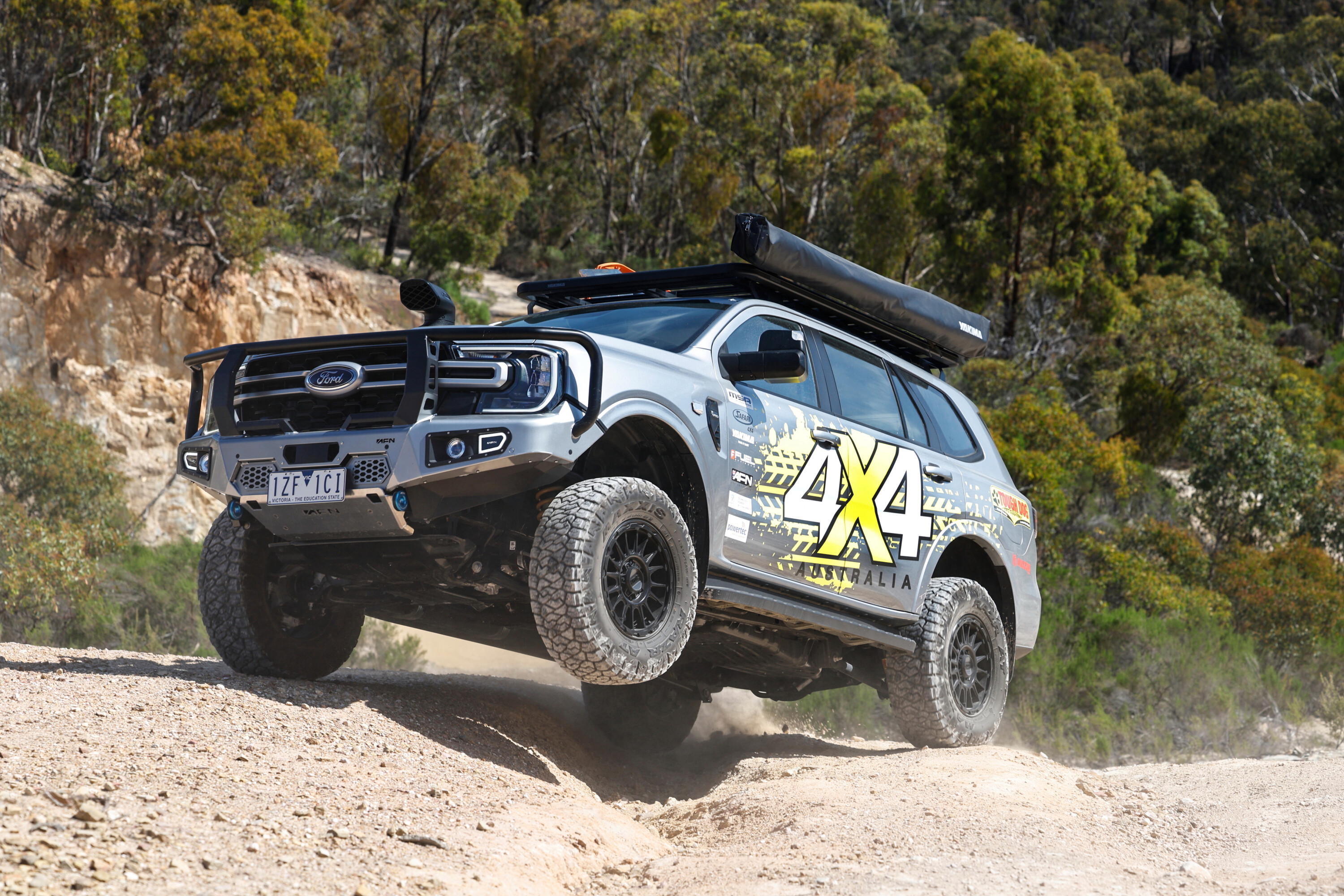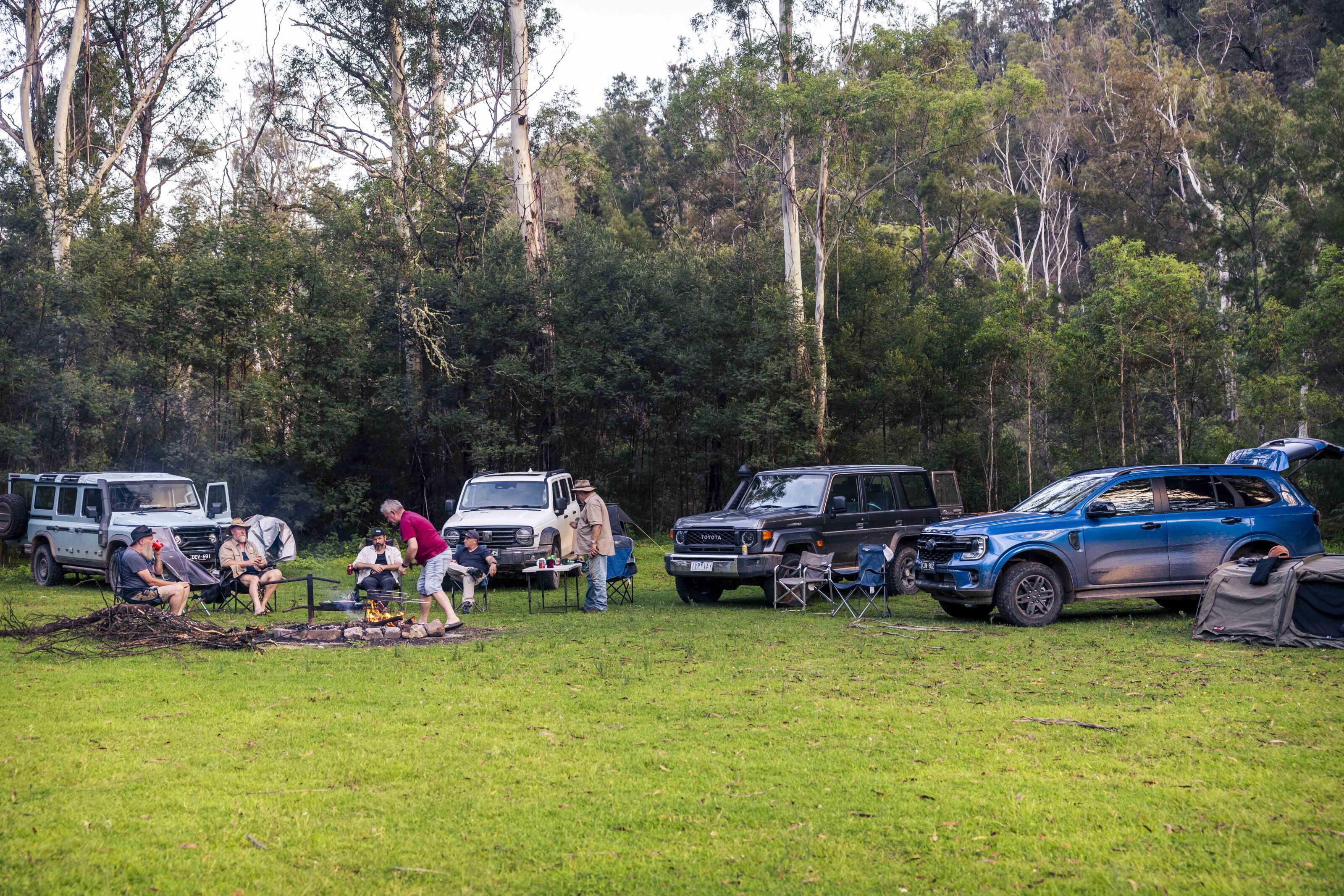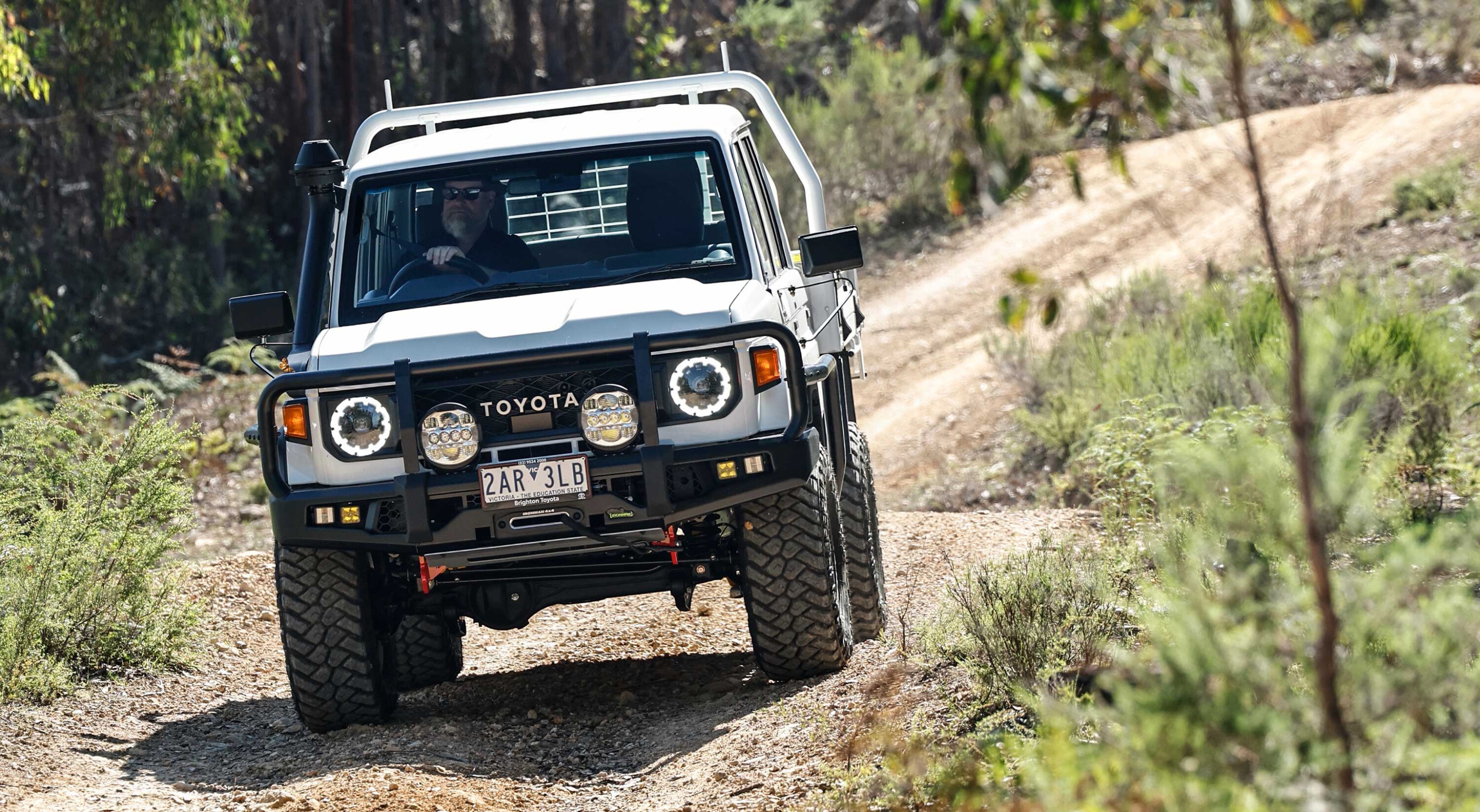After the biggest build we’d done to date on our Ford Ranger Sport V6, we decided to take a different direction on the next 4X4 Australia build without straying too far off the path.
The guys across the hall at WHEELS Magazine had just declared the Ford Everest their Car of the Year, which was big news as it marked the first time that a body-on-frame, dual-range 4×4 wagon had ever taken this esteemed accolade. This really showed the changing tastes in the Australian new car market and since then the Everest has been the top-selling 4×4 wagon in the country. No better reason then, than for us to secure one for ourselves to build into a family tourer.
We bought a base-model Everest Ambiente 4×4 and set about looking for the right gear to suit our requirements. With the Ford Ranger being such a big selling vehicle worldwide, we knew that there’d be plenty of accessories around that would also fit the Everest, which is built on the same platform.
The Everest has less cargo carrying capacity than its Ranger sibling, so the first bit of gear we fitted to it was a Yakima roof rack. We went with Yakima’s LockNLoad platform rack which we fitted to the Ford using Yakima’s RuggedLine longitudinal mounting system. The RuggedLine mounts not only look the part but provide a more stable mounting system for the platform a they run the length of the rack for maximum support.
There are loads of accessories to go with the LockNLoad platform so you can carry whatever you need on it. We opted for a couple of necessities for 4×4 touring including Yakima’s Ace’OSpades shovel holder, which we fitted on the back of the recovery track mount where it’s easy to access on the off-side of the Everest, while Maxtrax recovery boards go on whenever we are heading bush.
On the other side of the rack is Yakima’s MajorShady 270° awning that provides a massive 7.4sqm of shade and protection around the side and back of the Everest. The awning’s three arms easily deploy out and around the vehicle to provide quick and efficient cover from wind and rain, while there are three drop down telescoping legs to prop it up and tie it down for heavier rain and windy conditions. Once done, the awning is just as easy to pack away in its cover as it is to set up.
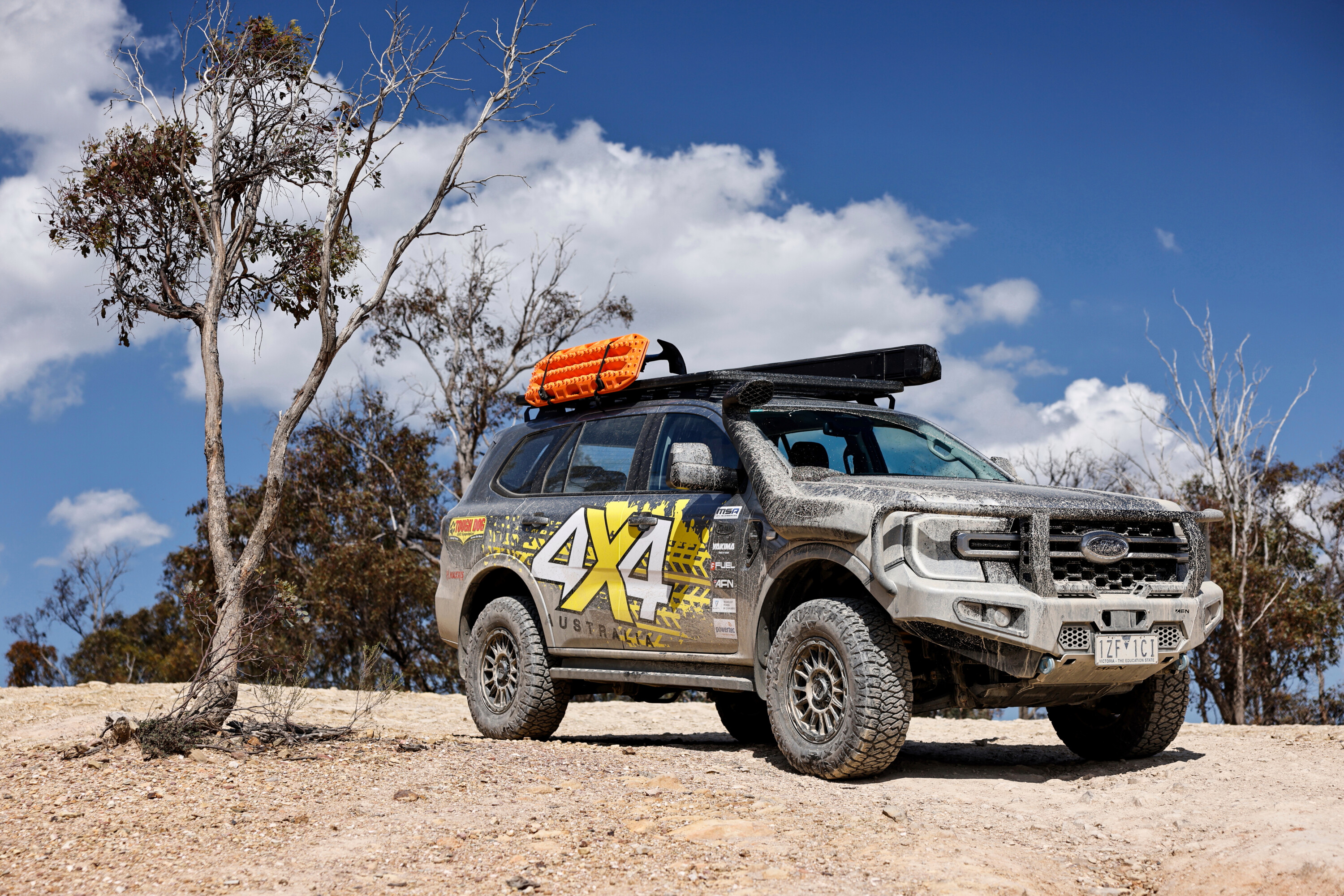
Next stop was for wheels and tyres, and again we’ve gone with rubber from the Maxxis RAZR range. While we ran 285 Maxxis RAZR mud terrains on the Ranger, we chose to go with a better on road package for the Everest in the form of 275/70R17 AT811 RAZRs. These all-terrain tyres drive a lot better on road than the bigger muddies we had fitted to the Ranger, yet they still provide decent performance and grip when off the blacktop.
The AT811 RAZRs are fitted to a set of KMC Impact alloy wheels sourced from Wheel Pros Australia. The satin black Impacts contrast nicely with the Ford’s Aluminium silver paint and have a stylish look that’s easy to keep clean.
We sourced five new wheels and tyres for the Everest because Kaymar wanted to fit one of its impressive rear bumpers with a swing-out carrier to the Everest. While we found the rear bar to work well, and it looked great, Kaymar chose to remove it while it works on an improved design for the Ford Everest and other upcoming 4×4 wagons. Stay tuned for more on these soon.
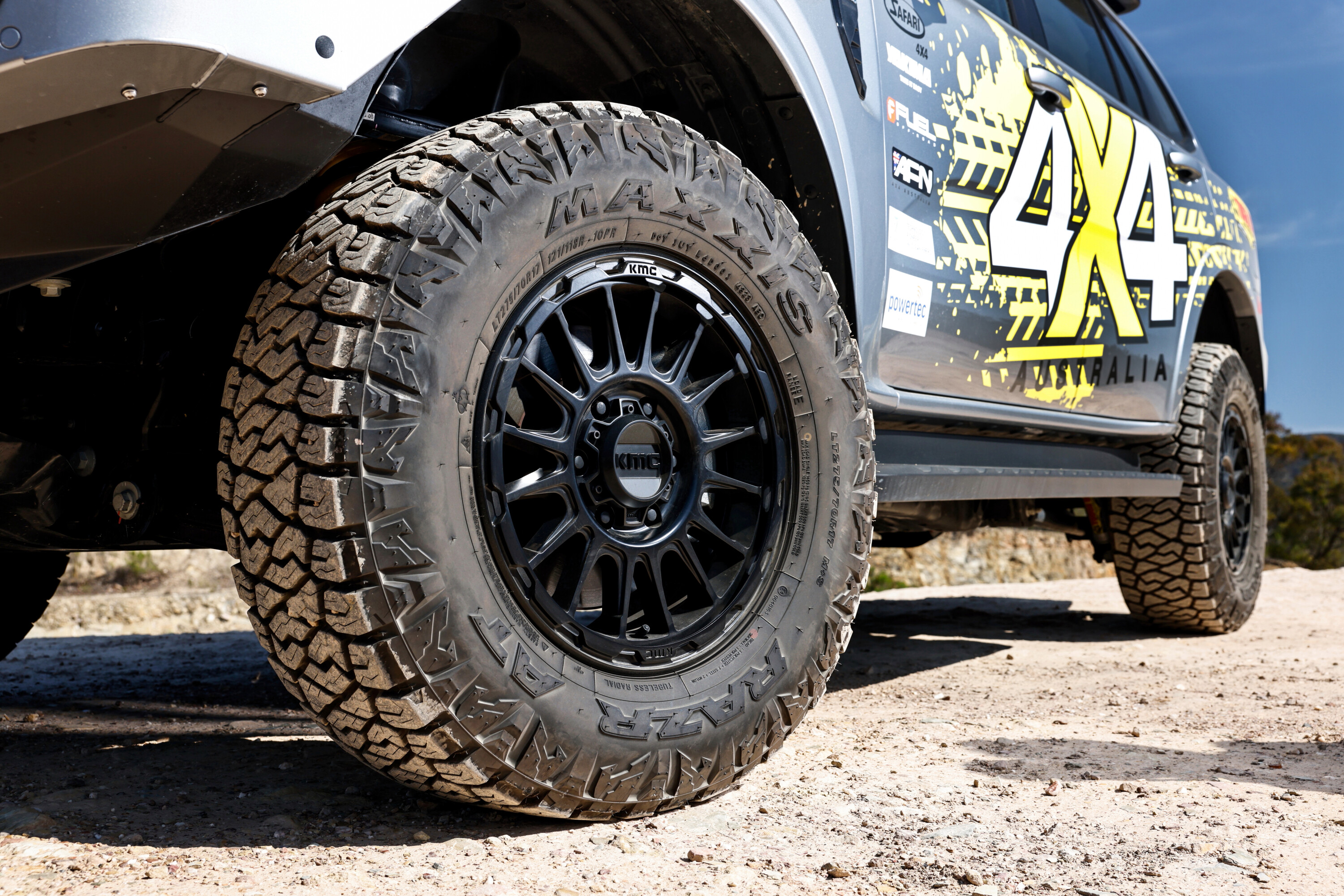
Another product that launched while we were piecing our Everest together was Safari 4×4’s ARMAX intake snorkel for the Ford Everest and Ranger. Safari’s V-Spec snorkel is the factory accessory product you can get from Ford dealers but the ARMAX is the bigger unit offering much more airflow, which is ideal for those who want to upgrade the performance of their vehicle with an engine tune and/or bigger exhaust system.
To achieve this extra airflow, the Armax snorkel uses a 4-inch ram head and larger snorkel body, and the airbox is cut away and opened up where it joins with the snorkel for maximum flow and efficiency. With this setup, Safari claims an airflow increase of up to 25 per cent.
Another great Australian product is MSA 4×4’s extendable towing mirrors. We missed out on fitting a set to our Ranger but MSA 4×4 released these to suit the current Ranger and Everest just in time for this build, so we were quick to have a set fitted. We really like the versatility of these mirrors as they can be extended and rotated to provide optimum visibility whether you are towing or not; they are way better than any OEM mirrors. The new MSA 4×4 mirrors also maintain the power-fold function of the factory mirrors.
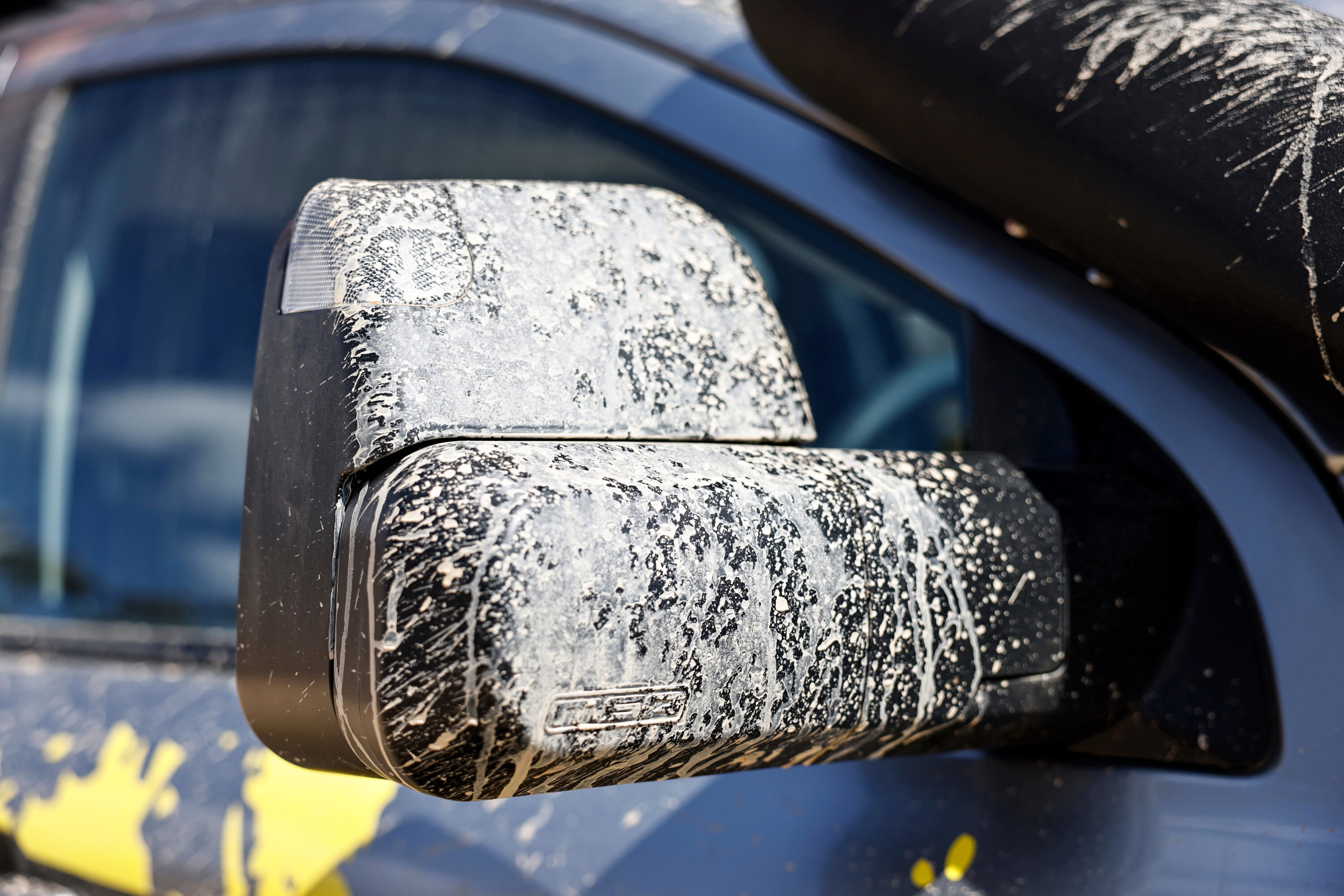
While we had the MSA 4×4 guys in town, we convinced them to fabricate a false floor for the cargo area on which we could mount a fridge slide and storage drawer. We had a National Luna stainless steel 55-litre fridge waiting to go into the Everest and it’s now secured to the MSA 4×4 pull-out slide for easy access. MSA 4×4 also made the fridge barrier which goes around the fridge, and this prevents loose items from falling around the unit and possibly blocking the fridge’s vents or getting caught in the slide.
An MSA 4×4 drawer on the other side of the cargo space allows us to carry recovery gear and other luggage securely and out of sight. The drawer is lockable for further security and it pulls out its full length so you can access stuff stored right at the back of the drawer without having to reach in blindly. Most other cargo drawers don’t give you this easy access to the whole drawer, and the MSA unit has top-quality fit and finish.
Speaking of quality, the AFN 4×4 bull bar fitted to the Everest is a top-notch product that has scored plenty of positive comments from those who have seen it. This is the same bar that AFN offers for the Ranger ute, as the front end is the same on both vehicles. It is a full bumper replacement piece, meaning there’s no cutting and reusing of the OE plastic bumper.
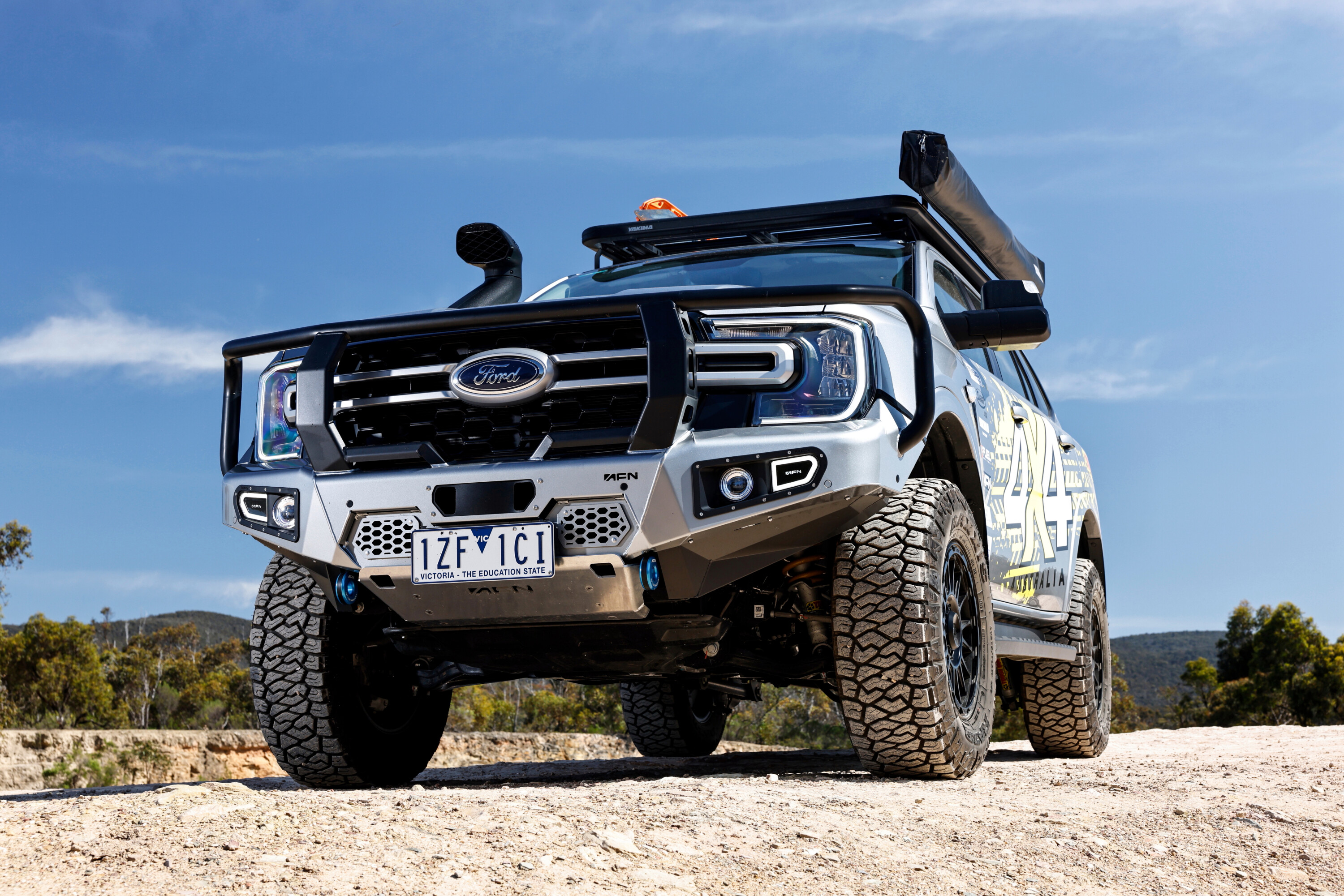
The bull bar is all steel with various thicknesses used throughout, with 12mm steel in the winch cradle, to 4mm and 6mm steel on the lighter parts of the bar. There’s an internal chassis structure that adds support and strength to the whole bar assembly.
While we didn’t fit a winch on this build, we are happy with the style of the bull bar and its standard features that include driving light and of antenna mounts, rated recovery points, front underbody protection plate, Hi-Lift jacking points, and LED fog lights and indicators. Importantly, the rounded edges on the recovery points ensure compatibility with soft shackles. The AFN 4×4 bull bar was fitted by the team at Statewide 4×4 in Keilor, and they also looked after the installation of the Tough Dog suspension kit including GVM upgrade.
When we still had the Kaymar rear bar fitted to the Everest, combined with the steel bull bar and other extras, we were nearing the limits of its 3000kg GVM; it tipped the scales at 2700kg with no gear or passengers on board. The Tough Dog kit for the Everest raises the GVM to 3750kg and includes replacement coil springs, shock absorbers and air assist rear air bags, plus all the details you need for GVM upgrade certification including the Cat-6 indicators that must be fitted to the front guards, and appropriate upgraded specification labels.
The front struts come pre-assembled and ready to bolt in and include Tough Dog’s nine-stage adjustable shocks so you can set them to suit the terrain and the load you have on board, with the adjustments made via an easy to reach dial on the bottom of each shock.
The suspension has given the Ford around 55mm of increased ride height for better off-road capability, while the higher quality dampers improve the ride and handling both on and off the road. The ride is a bit firmer than standard but it’s worth it for the improved stability and handling.
Rather than fit a dual-battery system in the Everest, we threw a Bluetti powerpack in the back and this provides enough power for running accessories such as the fridge when we’re parked up overnight. The Bluetti AC200L is rated at 2400W AC output, and up to 3600W, and can supply power via multiple USB, 12-volt and 240V AC outlets. It can be charged up from a 240V power outlet at home or in a caravan park, via solar panels, or from a vehicle’s alternator. While not as convenient as an integrated dundalk battery system, it has the benefit of being able to be removed from the vehicle for use in camp.
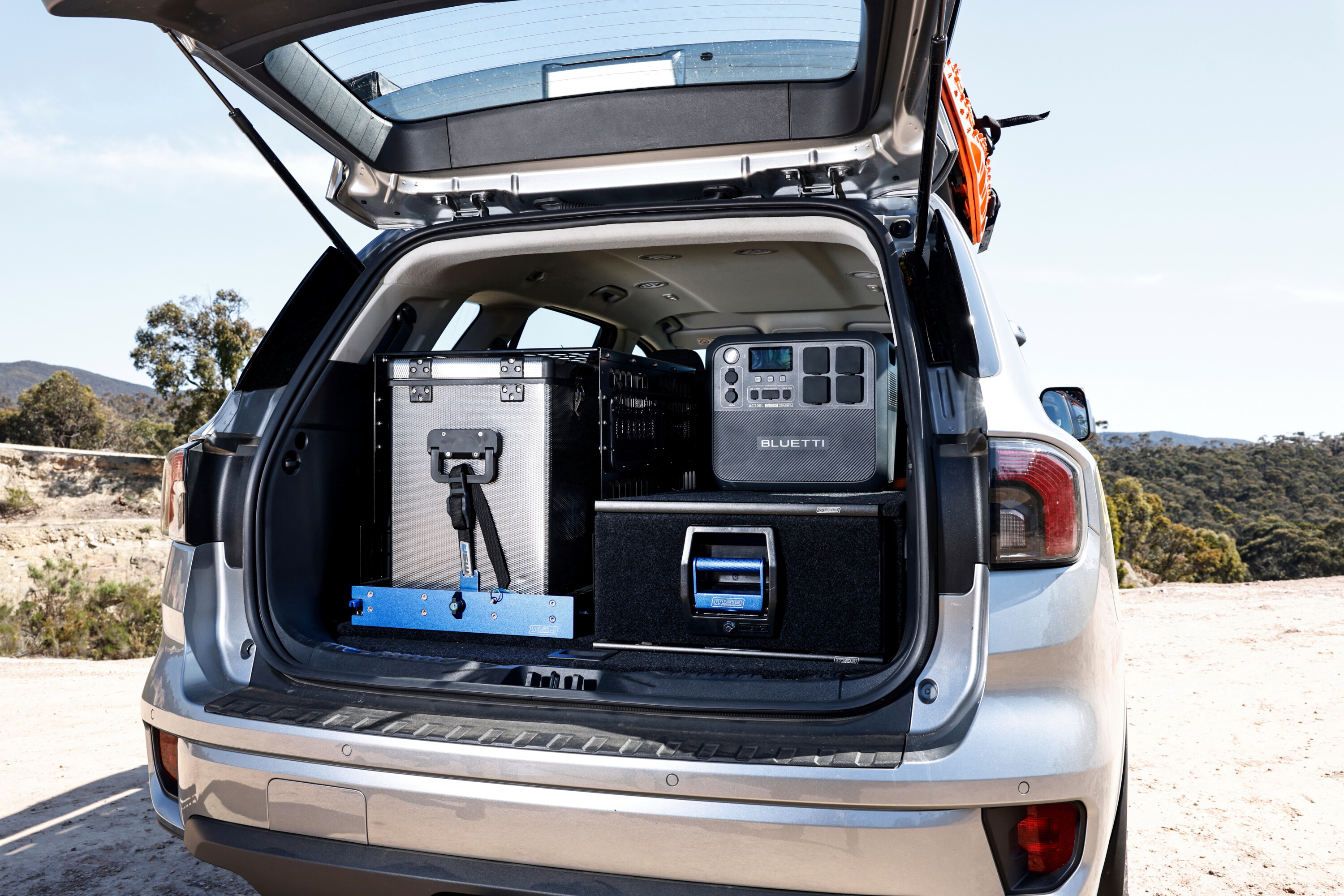
We have equipped the Everest with close to $25,000 worth of accessories, and that doesn’t include the cost of fitting. The accessories we have chosen improve the off-road performance of the Everest thanks to better grip, higher ground clearance, improved frontal protection, increased load-carrying capacity and higher air intake. Combined, these accessories have transformed the Everest into a sweet off-road touring wagon that would be well suited to any family wanting to get out and explore our great country. This 4×4 wagon will get you just about anywhere.
Once again, we have partnered with some of the best brands in the business to fit high quality components that make the Everest an impressive adventure rig. We could have gone further with auxiliary lighting, communications and navigation gear, a dual battery/auxiliary power system, increased fuel capacity, and even a rooftop tent, but we have done enough to create a top touring rig and prove the capabilities of the Everest platform.


